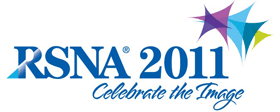
Abstract Archives of the RSNA, 2011
Stephanie Nougaret, Presenter: Nothing to Disclose
Helen Clare Addley MRCP, FRCR, Abstract Co-Author: Nothing to Disclose
Yahia Ibraheem Assiri MD, Abstract Co-Author: Nothing to Disclose
Georges Philippe Pageaux, Abstract Co-Author: Nothing to Disclose
Benoit Paul Gallix MD, Abstract Co-Author: Nothing to Disclose
Caroline Reinhold MD, Abstract Co-Author: Consultant, Synarc, Inc
Accurate methods are needed to diagnose hepatomegaly to avoid either unnecessary further evaluation or underdiagnosis. Liver size and assessment of hepatomegaly are well reported by ultrasound using the mid-clavicular line. However, no studies have reported reliable measurements to assess hepatomegaly by CT. Thus, the aim of our study was to compare different liver length measurements to gold standard liver volume using automated software.
130 patients were included in the study. For each patient, we measured cranio-caudal, oblique-transverse, mid-clavicular, and oblique cranio-caudal lengths. Liver volumetry was performed using automated software (Myrian, Intrasense, Montpellier). Hepatomegaly was defined by liver volume above 1600 cm3 in women and 1700 cm3 in men . Data were analysed using coefficient correlation and ROC curve; a p < 0.05 was significant.
The oblique cranio-caudal length correlated best with liver volume (r=0.83). An oblique cranio-caudal length of over 180 cm was associated with a hepatomegaly (Se=91%, Sp=86%); and area under the ROC curves was 0.92.
In contradistinction oblique-transverse, mid-clavicular and cranio-caudal lengths showed a correlation coefficient of 0.68, 0.64, and 0.57 respectively.
To predict hepatomegaly, oblique cranio-caudal length seems more accurate than other measurements of liver size. Impact of such comparisons may be of interest for economic purpose when liver biological tests are considered.
Oblique craniocaudal length seems to be accurate to diagnose hepatomegaly which could avoid either unnecessary further evaluation or underdiagnosis. Cost effectiveness evaluation may be needed.
Nougaret, S,
Addley, H,
Assiri, Y,
Pageaux, G,
Gallix, B,
Reinhold, C,
How to Easily Assess Hepatomegaly by CT?. Radiological Society of North America 2011 Scientific Assembly and Annual Meeting, November 26 - December 2, 2011 ,Chicago IL.
http://archive.rsna.org/2011/11008513.html

